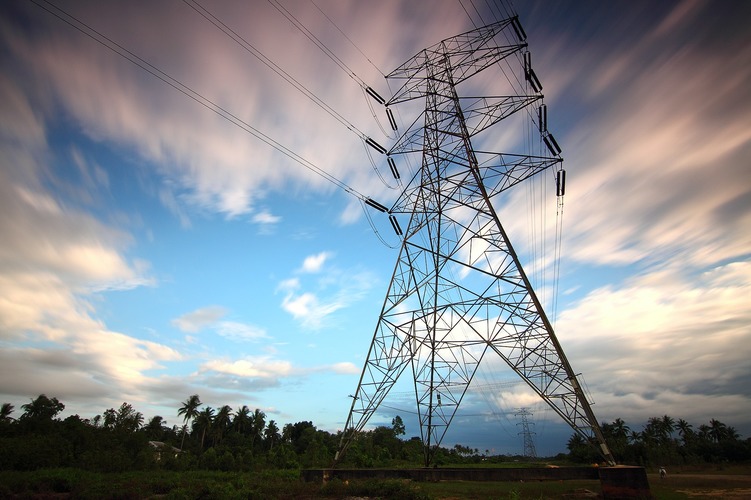Small and medium-sized enterprises (SMEs) are the backbone of South-east Asian economies. They account for 89 to 99 per cent of the total count of establishments in the region and contribute anything between 30 and 53 per cent of each country’s gross domestic product.
Any reduction of greenhouse gases from SMEs will therefore have a major impact on the total ecosystem. But decarbonisation is a complex process that requires new investments and skill sets, and SMEs must start their journey early to assess the options available for their decarbonisation.
Spurring energy transition
Much of the effort expended so far to address climate change has focused on investments in renewable energy such as solar, wind and geothermal. However, investments in renewables take time to achieve the scale and level of efficiency needed for longer term commercial viability. While the urgent push to increase renewables in the energy mix continues, it is also critical to take a parallel track to help carbon-intensive industries move towards a lower carbon future.
Industries such as oil and gas, metals and mining, fossil fuels, power generation and transportation are heavily reliant on fossil fuels. In South-east Asia, these four major industries’ account for more than 80 per cent of total emissions, compared to only about half globally. Unlike western countries whose wealth have afforded their transition into cleaner energy earlier, a fast-growing developing South-east Asian region remains heavily reliant on fossil fuels.
Given these economies’ lower starting points compared to developed economies, there is greater urgency for their companies to decarbonise. It becomes even more acute as climate change looms larger with each passing year.
Yet, green financing is not readily available to companies in the carbon intensive industries by virtue of their DNA or heredity. The lack of green financing for these carbon-intensive industries is hindering their much-needed shift towards a cleaner future.
Coming into the picture to help these companies is transition finance, an important financial tool to support their energy transition that will contribute to the overall reduction of GHG emission.
Companies will require substantial amounts of capital to bring about these changes. The Asian Development Bank estimates that some US$210 billion of investments are required every year until 2030 for climate change-adjusted infrastructure in the South-east Asian region.
In raising transition financing for projects, companies must be prepared to share a climate transition plan with the lender and relevant agencies, and how they would reach net zero emissions. The transition plan must have clearly defined timelines and a science-based de-carbonisation reduction pathway.
Decarbonisation activities supported by transition finance can take different shapes and forms. Companies can consider near-term facility upgrades to generate a higher level of operational efficiency. Other measures include the supply or purchase of biofuels to lower the carbon content in the products they manufacture, for example sustainable aviation fuel or undertake a business transformation to provide or consume renewable energy.
In the medium term, companies can shift their activities to invest in or support carbon capture utilisation or storage technology, or pivot to alternative new near-zero emission fuel technologies such as green hydrogen or ammonia.
Supporting SMEs
Setting up a transition plan is not a simple process and undertaking some of the decarbonisation activities will not be a simple flick of a switch for SMEs and hence there is great impetus for them to start doing so earlier. At the same time, help from various stakeholders is required to spur the transition for these SMEs.
Banks have a role to play in ensuring transition finance is available for carbon-intensive industries, and at the same time, to complement investments in renewable energy. Net zero emissions ambition can thus be achieved while ensuring the stability of energy supplies. This financial support will encourage carbon-intensive businesses to begin implementing long-term climate transition plans.
Financial institutions must support the energy transition by providing clear guidance. They must share know-how beyond financing, assist in building knowledge in climate transition planning, reporting and sharing best practices across the ecosystem in transition financing.
Multinational corporations, state-owned enterprises and large corporations are among the most well-resourced to lead the energy transition. They will require their ecosystem, such as their suppliers, to provide lower carbon source materials or distributors to deliver lower carbon end products. They set the overall direction and pace for smaller companies in the supply chain to de-carbonise and have a responsibility to help their supply chain to cut the overall GHG emissions.
The corporate sector’s success in energy transition lies in the commitment of multiple stakeholders to engage and reach their net zero emission goals.
Governments need to put in place the regulations and incentives such as tax incentives or even public funding to spur investments in new technologies to aid companies in the carbon intensive industries to decarbonise in alignment with their national net zero emission commitments while balancing socio-economic goals.
Consumers must be willing to bear a portion of the higher costs that will likely arise from development and adoption of new technologies.
Private companies should plan early for their transition journey and translate them into action. They need to seriously consider their GHG reduction pathways and invest in lower carbon businesses. The talent pool currently employed in carbon-intensive sectors can be re-trained for low carbon energy employment.
October 31, 2022













